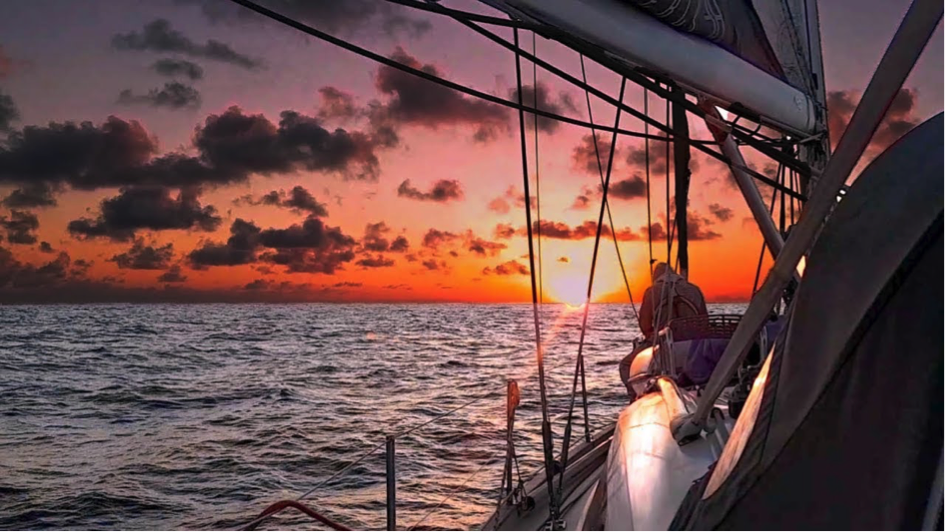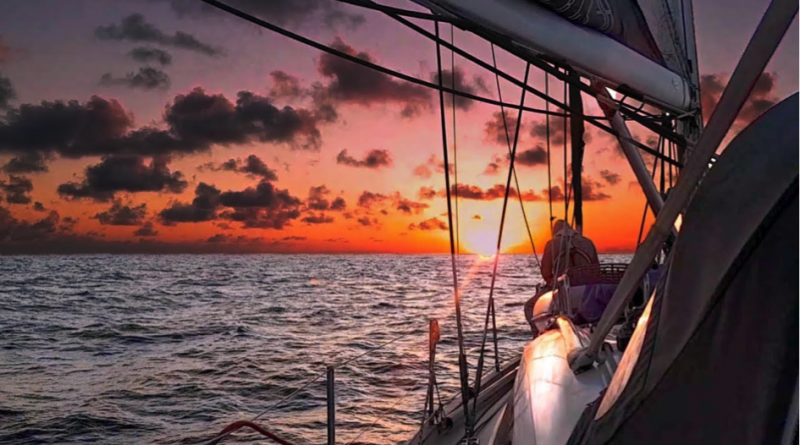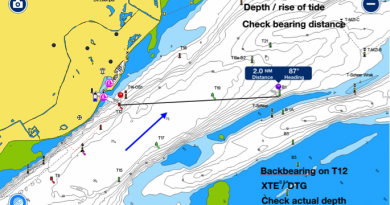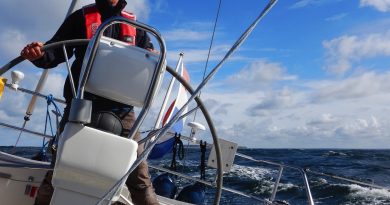RYA-tips #30 – Blue water sailing – sail-plan
Zeilen is een combinatie van wetenschap en kunst. En voor wie daar meer over wilt weten schrijft Albert De Nijs, instructeur bij de De Zeezeilers van Marken wekelijks een rubriek met tips&trics van de Royal Yachting Association.

Most blue water routes follow wind-patterns as preferred by the old square riggers, who sailed with winds aft-of-the-beam. It is still definitely more relaxed to be reaching then beating to windward, especially for extended periods of time.
The sail-plan will reflect the preference for tradewind sailing. Many blue water sailors tend to operate quite conservatively, with a sail set-up that allows for easy reefing when circumstances dictate. Short-handed, especially at night, you’re looking for a simple set-up. With average winds around 20kts, quite often the conventional sail-plan with full white sails is preferable to a twin-headsail configuration or spinnaker/gennaker. On longer passages you don’t want to push the boat or crew too hard, convenience and comfort are more important. With a small crew you could reef the main for the night.
When you stabilise the pole with the pole-up, pole-down and guy (triangulated pole, see art. #6), the headsail will be more stable and less prone to collapsing and slamming. The boat remains manoeuvrable and the sail can still be furled or gybed when a squall comes along.
With a properly secured boom (preventer, vang and mainsheet) and poled-out headsail, you can sail deep downwind. When running dead down-wind in some swell, the boat can start to roll. In that case gybing from broad reach to broad reach is the better option. This often results in a more comfortable ride, increases the VMG and reduces chafe.
For stronger winds, most sailors carry at least a storm jib and a deep reefed main or try-sail. An (removable) inner forestay allows you to reduce the amount of fore-sail easily, first taking away the genoa and using only the staysail. If the winds increase further, you can switch to a storm jib on the inner forestay and a deep reefed main, thereby bringing the centre of effort both down and closer towards the mast.
For storm tactics, there are many different options and opinions, depending on type of yacht, sea room, sea-state etcetera. Some skippers prefer a sea anchor, to keep the bow pointed towards the incoming waves. Others prefer warps or a drogue, trailed from the stern to avoid broaching and keep boat speed under control. Another option is to keep running under a storm jib and keep the boat powered-up, minimizing the speed difference between the incoming (possibly breaking) waves and the boat. A shallow angle off dead-downwind to avoid broaching seems to work well, and using a storm-jib gybing isn’t a big problem.
As skipper you need to be aware of the different options, and know which ones are relevant in your situation. A windvane is well capable to sail a yacht in these conditions. We will discuss this ultimate blue water tool in the next article.
Albert de Nijs, Dutch Offshore Sailing Academy




